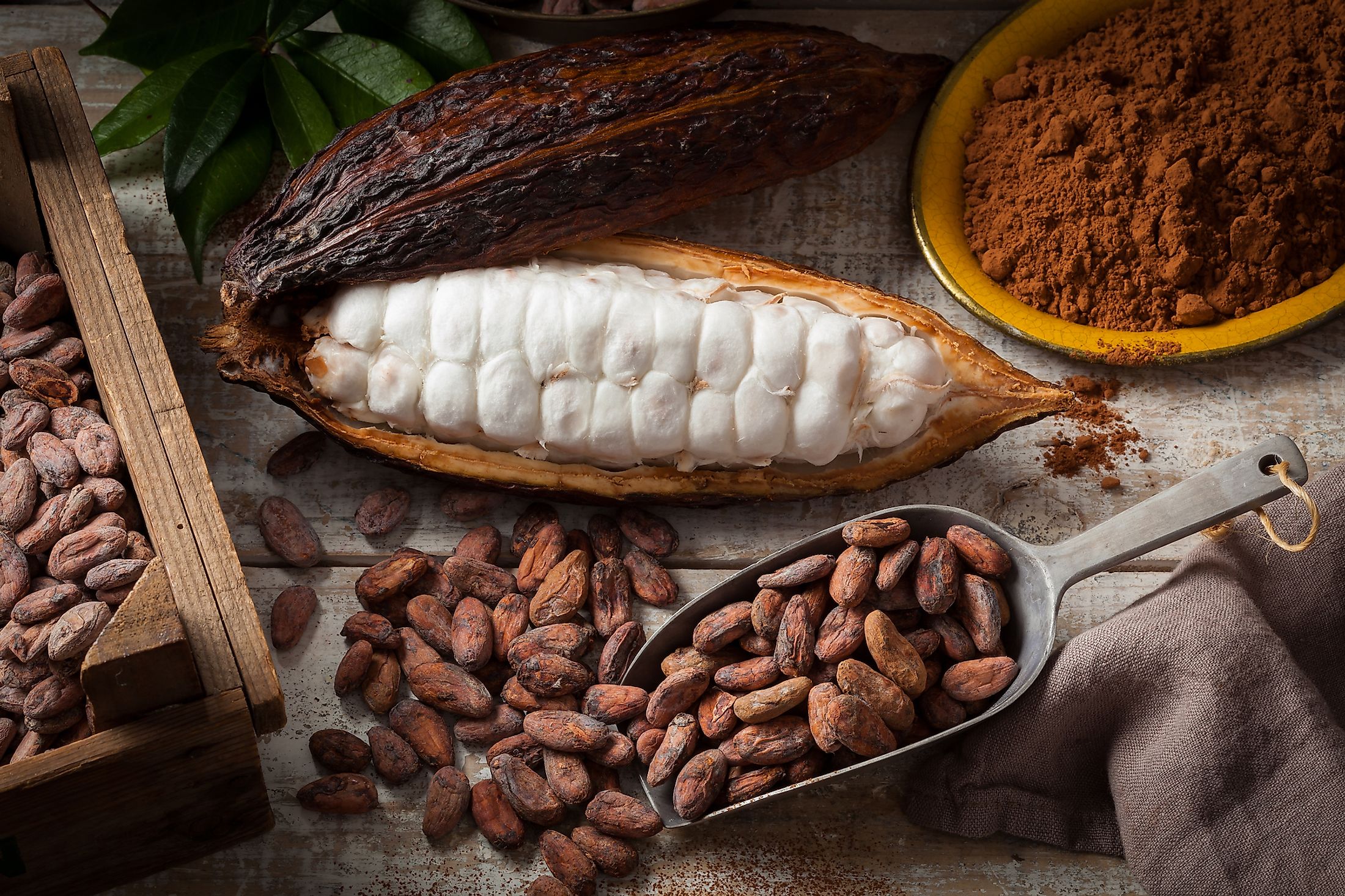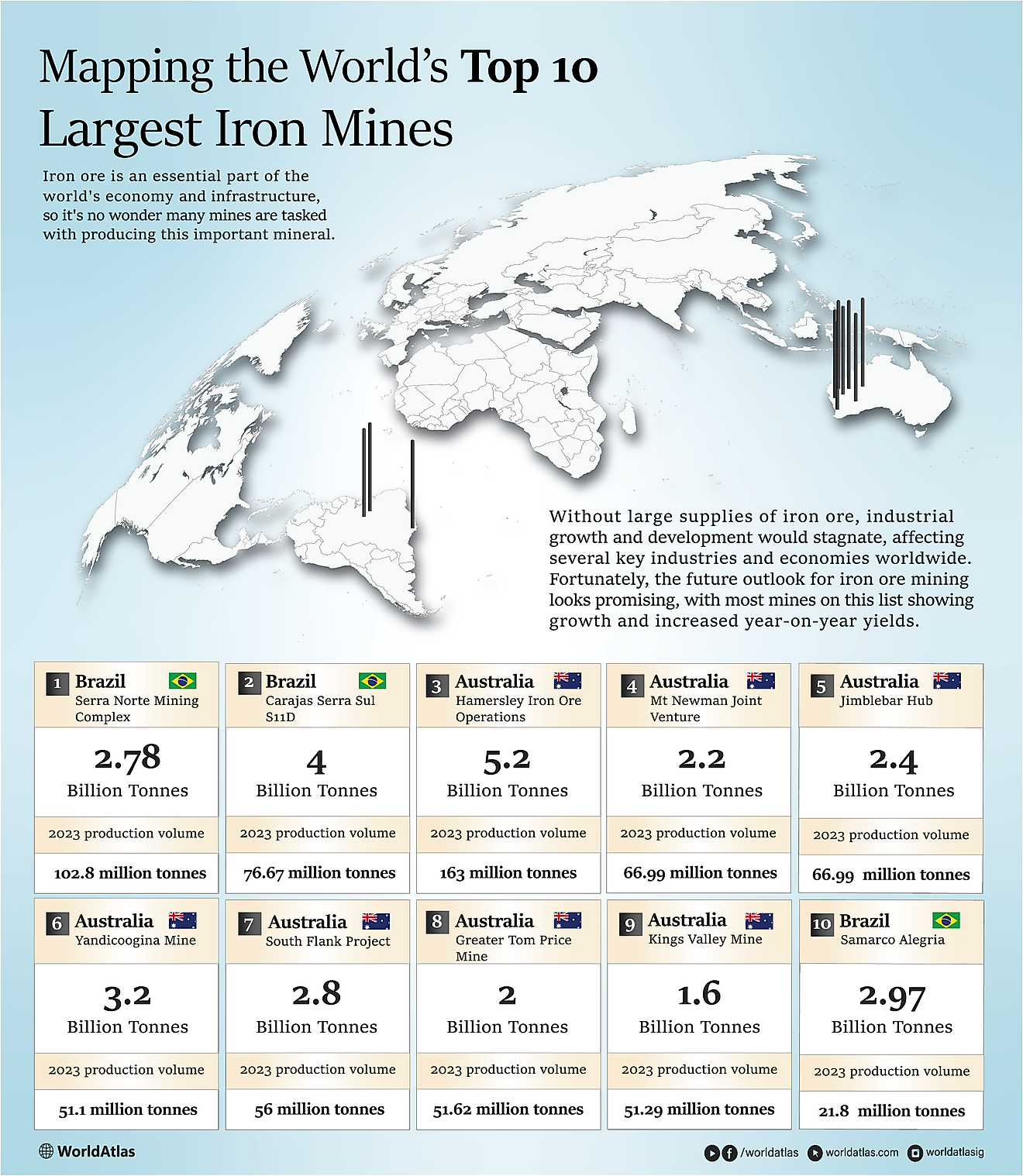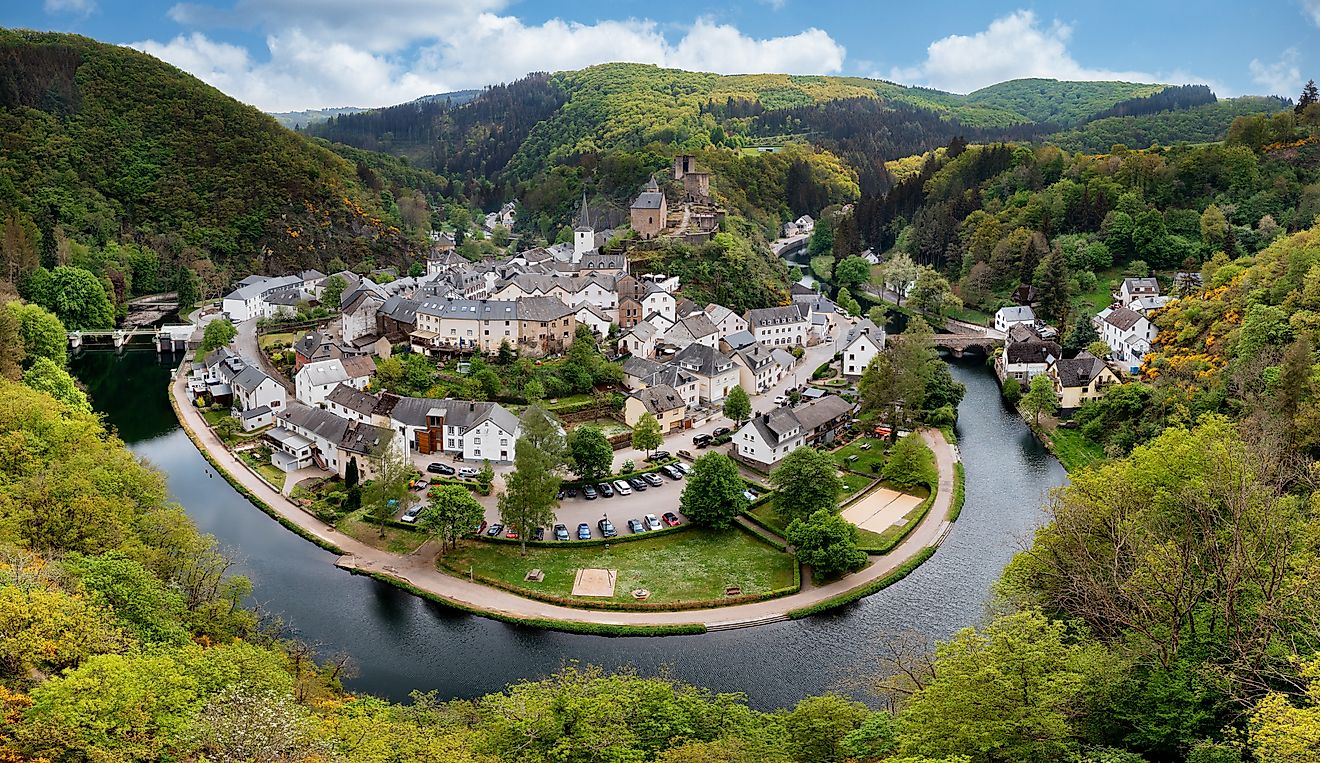
The Top Cocoa Producing Countries In The World
Cocoa is the dried and completely fermented fatty seed of the fruit of the small evergreen cocoa tree (Theobroma cacao) that is native to the Amazon rainforest. The word ‘cocoa’ comes from the Spanish term ‘cacao,’ which has in turn been derived from the Nahuatl term ‘cacahuati.’ Cocoa is a valuable crop that was first cultivated in the equatorial region of South America approximately 5,300 years ago, and it is believed that the Mayan and the Aztec people were the first to grow the cocoa trees successfully. The cocoa trees are mainly grown in tropical zones about 20° to the north and south of the Equator, where favorable climatic conditions for the cultivation of cocoa trees are available. The cocoa beans serve as the main ingredients for making chocolates and many Mesoamerican foods. The following article discusses the top 10 cocoa-producing countries in the world.
- Cote d’Ivoire – 2,200,000 tons
- Ghana – 800,000 tons
- Indonesia – 739,483 tons
- Nigeria – 340,163 tons
- Ecuador – 327,903 tons
- Cameroon – 290,000 tons
- Brazil – 269,731 tons
- Sierra Leone – 193,156 tons
- Peru – 160,289 tons
- Dominican Republic – 77,681 tons
1. Cote d’Ivoire – 2,200,000 tons

Located in West Africa, Cote d’Ivoire is the biggest cocoa producer globally, producing about 2,200,000 tons of cocoa beans annually. Cote d’Ivoire accounts for about 38% of the total cocoa bean production in the world. It is to be noted that the national economy of Cote d’Ivoire is highly dependent on cocoa prices and a significant portion of the country’s export revenue comes from the export of cocoa beans.
2. Ghana – 800,000 tons

The Republic of Ghana - another West African country, is the second-largest cocoa producer globally, producing about 800,000 tons of cocoa beans annually. Cocoa is the mainstay of the agricultural sector of Ghana, accounting for about one-third of the country’s export revenue. The favorable climatic conditions in Ghana have increased the cultivation of Ghana’s cocoa crop by more than 20% in the previous growing season. It is to be noted that although Cote d’Ivoire is the largest producer and exporter of cocoa beans in the world, Ghana is also well-known for producing high-quality cocoa beans that command a premium price of Cocoa in the world market. The high-quality Cocoa in Ghana is mainly due to the country’s grading system that takes only top-quality cocoa beans from the farmers.
3. Indonesia – 739,483 tons

The Southeast Asian nation of Indonesia is the third-largest producer of cocoa globally, producing about 739,483 tons of cocoa beans annually. The Cocoa bean is also one of Indonesia’s crucial agricultural export products, and in the past few years, this sector has witnessed massive growth. There are approximately 1.5 million hectares of cocoa plantations in Indonesia, and the island of Sulawesi alone accounts for more than 75% of the country’s total cocoa production. The United States, Malaysia, and Singapore are some of the most important destination countries for the cocoa beans of Indonesia.
4. Nigeria – 340,163 tons
The next West African nation on this list is the Federal Republic of Nigeria, the world's fourth-largest cocoa producer, producing about 340,163 tons of cocoa beans annually. Cocoa is the country's leading agricultural export and serves as Nigeria's principal non-oil foreign exchange earner. However, after Nigeria started investing in the oil sector, the country's share in the world output of cocoa declined. Cocoa production in Nigeria accounted for only 0.3% of the country's total agricultural GDP in 2010.
5. Ecuador – 327,903 tons

Situated in the northwestern portion of South America, the Republic of Ecuador is the fifth-largest cocoa producer globally, producing about 327,903 tons of cocoa beans annually. Over the years, cocoa production has played a highly significant role in the history and economy of Ecuador. The cocoa grown in Ecuador is unique, referred to as Arriba or Nacional, which is one of the most desired cocoa among the chocolate producers. Even though Ecuador accounts for only 4% of the world's cocoa production, it is responsible for over 70% of the world's production of fine aromatic cocoa.
6. Cameroon – 290,000 tons
Situated in west-central Africa, the Republic of Cameroon is the sixth-largest cocoa producer globally, producing about 290,000 tons of cocoa beans annually. Cocoa production is a vital sector for rural communities, and more than 600,000 cocoa farmers all over Cameroon are involved in this sector.
7. Brazil – 269,731 tons

Located in South America, Brazil - the world’s longest and seventh-largest country, is the seventh-largest producer of cocoa globally, producing about 269,731 tons of cocoa beans annually. Cocoa production is a significant part of the agricultural economy of Brazil. It is to be noted that in the early 1980s, approximately 430,000 tons of cocoa beans were produced by Brazil alone. However, the production has dipped drastically over the years, mainly due to declining prices and the spreading of a fungal disease named Witches’ Broom.
8. Sierra Leone – 193,156 tons
Situated on West Africa’s southwestern coast, the Republic of Sierra Leone is the eighth-largest cocoa producer globally, producing about 193,156 tons of cocoa beans annually. Over the years, cocoa has been one of the most vital export products of Sierra Leone. To improve the living conditions of the local farmers and gain profits from this crucial industry, Sierra Leone opened its first cocoa processing factory that is expected to process up to 4,000 tonnes of cocoa beans annually. In 2019, about $33.2 million worth of cocoa beans were exported by Sierra Leone, which made it the world’s 17th largest cocoa bean exporter. A significant part of the country’s annual cocoa production is exported to the Netherlands, Belgium, Italy, Malaysia, and the United States.
9. Peru – 160,289 tons

Located in the western portion of South America, the Republic of Peru is the ninth-largest cocoa producer globally, producing about 160,289 tons of cocoa beans annually. The Peruvian Amazon contains a wild genetic diversity of cocoa, and over 100,000 families across Peru earn their living through the cultivation and production of cocoa. Peru is also the world’s second-largest organic cocoa producer and ranks first globally in fair-trade organic cocoa production. Peru is considered one of the high-quality fine flavor cocoa producers globally, and the cocoa export in the country has witnessed considerable growth over the last few years.
10. Dominican Republic – 77,681 tons
Occupying the eastern two-thirds of the Hispaniola Island in the Greater Antilles Archipelago, the Dominican Republic is the second-largest country in the Caribbean. It is also the tenth-largest cocoa producer globally, producing about 77, 681 tons of cocoa beans annually. According to the International Cocoa Organization, Dominican Republic serves as a principal source of organic beans and fine flavor cocoa, about 40% of which is exported to premium markets. There are about 150,000 hectares of land in the country that have been planted with cocoa trees. In addition to this, there are 36,236 registered farms in the country engaged in producing organic cocoa.
As of 2020, the total cocoa production globally is about 5,757,953 tons. Of this, 68.4% come from the African countries, 17.3% from the Americas, 13.5% from the Asian countries, and 0.8% from the countries in Oceania. Based on the above discussion, about 70% of the total cocoa production in the world comes from the four West African nations of Cote d’Ivoire, Ghana, Nigeria, and Cameroon. Of these West African nations, Cote d'Ivoire and Ghana are the two largest cocoa producers, accounting for over 60% of the world’s total cocoa production every year. However, a survey conducted by the University of Chicago found that about 1.48 million children are employed as laborers to cultivate cocoa beans and engage in hazardous work on cocoa farms. Several people have spoken out against this unfair use of child labor in cocoa production. Therefore many human rights organizations have come forward and requested consumers to buy chocolates from Fairtrade certified brands that do not use child laborers in the production of cocoa.







